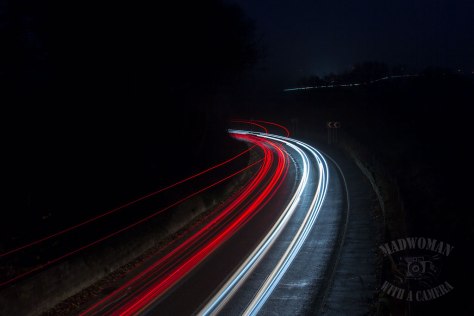
Abstract Portrait on Railway Lines
This technique creates a surreal portrait and is great if your model is a little camera shy. My Preenager son has off days when it comes to modelling for me, this shoot was done a week later than scheduled as he threw a grump about having to walk to the location.
Equipment:
- A camera (Canon EOS 60D) and Kit Lens (Canon IS 18-55mm).
- A tripod.
- A picture frame with the glass and back removed (you can tape a picture mount inside the frame if you like).
Set-up:
Location is key for this shoot, there needs to be a strong link between what appears outside of the frame and what is inside the frame after post processing. So alleyways, tree lined driveways/lanes and tunnels are all good options but use your imagination and see what you can come up with. I would suggest railway lines but it is illegal to be on rail tracks in most countries whether they are active or not and you’re also trespassing on private property. I’m lucky enough to live near a heritage steam railway and they have some preserved but unused tracks that are accessible to the public.
At your chosen location, set up your camera and tripod, set the camera to Aperture Priority Mode (Av Mode) and dial in f/11. Set the ISO to about 100-200 & try to keep the shutter speed above 1/60 seconds.
Now compose your shot, kit lenses are great to acquire the balance of working distance, focal length and tripod height to get a beautifully composed shot.
The Shoot:
Set the lens to manual focus as you will need to take 2 shots and they need to be consistent. With your model holding the picture frame in place; focus on the models hands (use liveview & zoom in to get pinsharp focusing) and take your first shot. Check it for composition and focusing. Make any setting adjustments if needed, refocus and shoot again until you’re happy with your image.
DO NOT TOUCH THE FOCUS RING once you happy with your image with the model. Do not alter any settings and get your model to come stand with you whilst you take a few shots of just the background.
Post Processing:
I used Adobe PS Elements 12 to post process to show you didn’t need Photoshop to edit this.
Open your chosen model shot & background shot into the same PSE document. (Copy and then paste the model image into the Background image). The model image will be Layer 1 and the background image will be the Background Layer.
Activate Layer 1, go to the Toolbar and select the Polygonal Lasso Tool. Zoom in on the frame, then place a lasso point in each inner corner of the picture frame and it will become a Selection when you click on the first point again.
Press Ctrl+Shift+I to invert the selection. Press D to make black the foreground colour in the Colour Palette on the Toolbar and click on Add Layer Mask in the Layers Palette. This will allow the background image to show in the picture frame.
Press Ctrl+Shift+N to add a New Blank Layer. Click and drag this layer to move it between Layer 1 and the Background Layer in the Layers Palette.
Select the Brush Tool from the Toolbox, set it to a smallish sized soft edged brush and paint shadow lines along the inside edges of the frame to make it appear more 3 dimensional. In the Layers Palette, set the Opacity to somewhere between 15-30% to make the shadow look realistic.
Activate Layer 1 and press Ctrl+Alt+Shift+E to merge all layers into a new layer.
Now edit as you would a normal image before flattening the layers and saving the image.
So if you have any questions or queries, comments or tips to help others, don’t be afraid to leave a comment below or if you give this technique a try, tag me in your post so I can see how you did and give you a like and a share (Twitter @MadWomanAndDSLR – Instagram @madwomanwithacamera).
Love always – Mad Woman with a Camera x









You must be logged in to post a comment.